In more exciting news, at site 38FA608 on the Broad River we have entered what appears to be an intact Late Archaic/Early Woodland midden in our excavation block. If my initial diagnosis is correct, we're now (literally) scraping the top of a buried occupation zone that dates to around 1000 BC (i.e., about 3000 radiocarbon years before present, give or take). We've encountered this zone at about 95-100 cm below datum, which translates to roughly 65-70 cm below surface in the block. There is no sign of a heavy occupation zone in the existing vertical profile wall at that depth, so we may be dealing with something that is fairly limited in size (or at least was not distributed evenly across the ground surface that was present 3000 years ago). In that regard, this was a bit of a surprise, but it's the good kind of surprise: we're learning more about the kinds, dates, and extents of deposits at this site with every shovel-full of dirt.
First, the "downstairs." We were without Jim Legg, so work was paused on the profile wall excavation (Unit 9). Two students finished up level 4 of Unit 7, the 1m x 2m unit being excavated to explore below the exposed profile. As I wrote last week, Unit 7 succeeded in locating the termination (or at least a hiatus in) the lamellae that presumably formed as a result of a process of particle migration/accumulation caused by water percolation. In other words, the end of the lamellae may be telling us something about the position of the water table.
Anyway, our work at this site could potentially end up being useful in helping to understand what's going on during the Early Woodland here, both in terms of lithic technology and cultural/social behavior. The zone that we're getting into in the block (partway through Zone 3) probably corresponds to the large pit features exposed in the profile wall. If we don't find any features in the block at this depth, it is only going to increase my desire to rescue what is left of those features from the profile. That would entail excavating a roughly 3m x 3m unit down from the top of deposits -- not a trivial undertaking. It would give us three more meters of vertical profile and would expose the remainder of the features in plan view. It would be a big time/energy commitment, and I don't think I can get it done during the field school. I may change my mind, however.
Excavations in Unit 5 are a currently about 20 cm behind those in Units 4 and 6. Given what we now know is on the horizon for Unit 5, my plan is to continue the intensive piece-plotting excavations in that unit all the way down. At 75 cmbd, there's a possible feature to deal with (it looks fairly similar to Feature 6, the small charcoal-flecked basin we excavated in Unit 6 last week). The large, plow-sheared rock in Unit 5 remains in the floor, as we still haven't reached the surface that it's sitting on (thankfully, no-one has tripped over it yet). It will be interesting to see what, if anything, is around it when we reach the depth that would have been the surface when it was deposited.
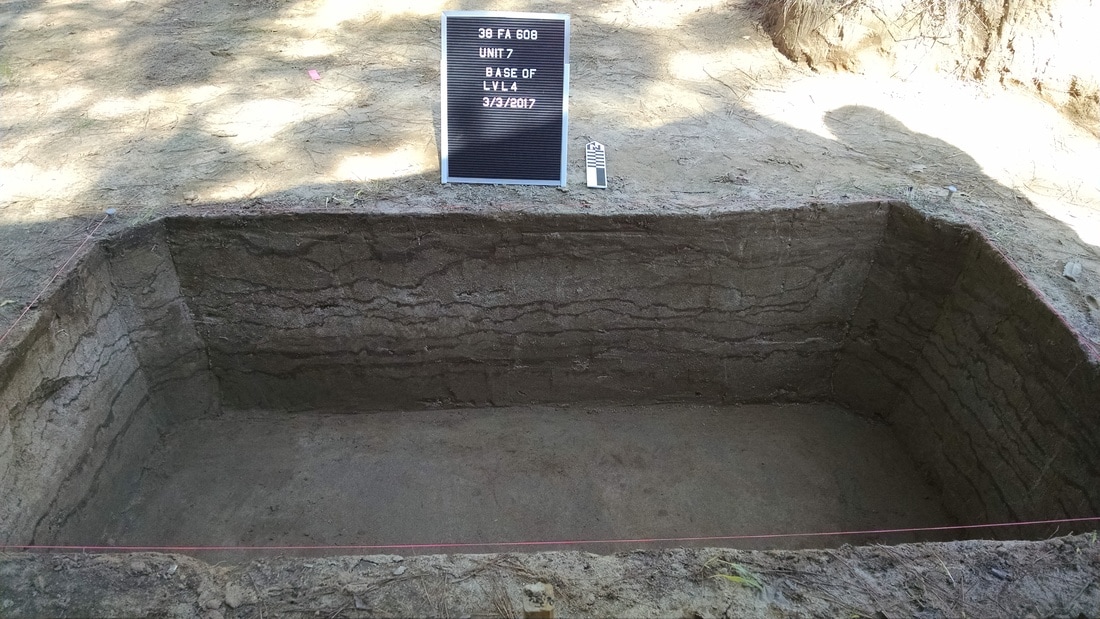
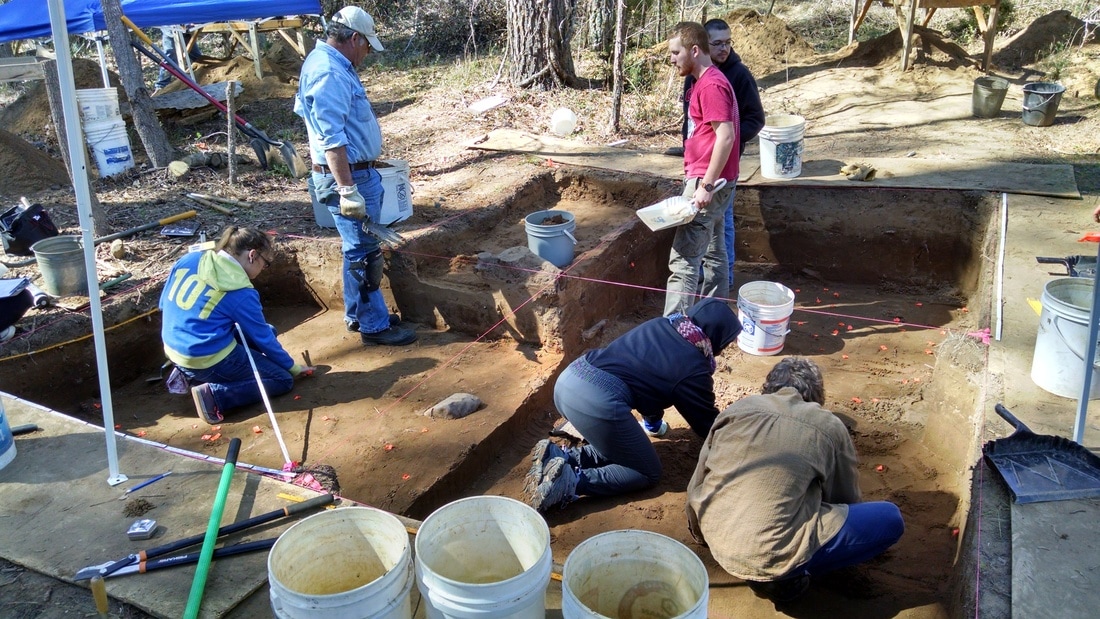
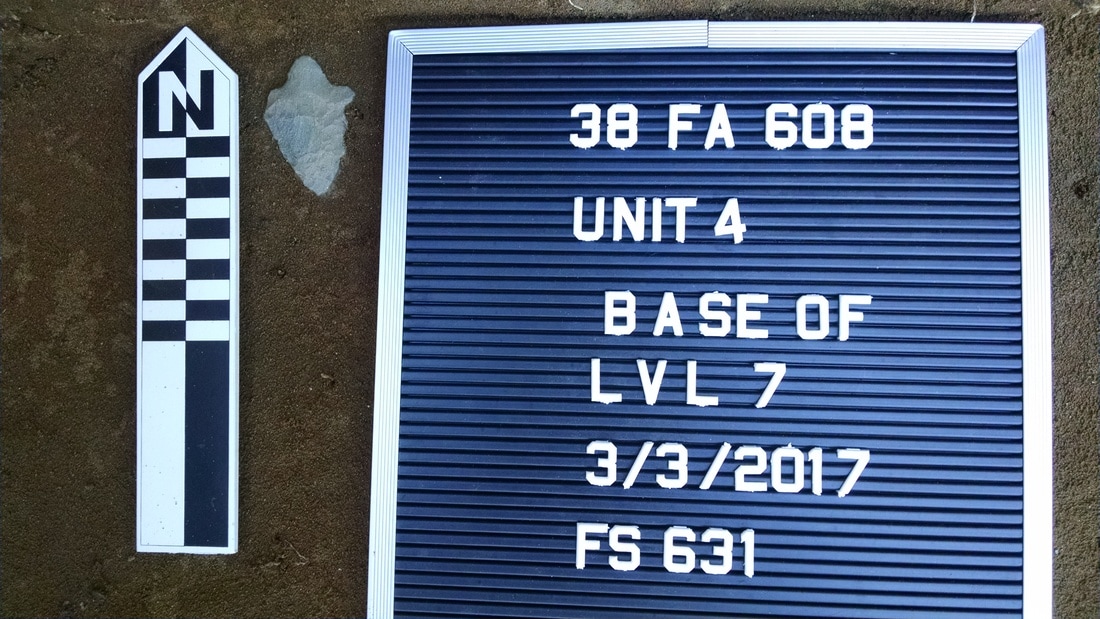
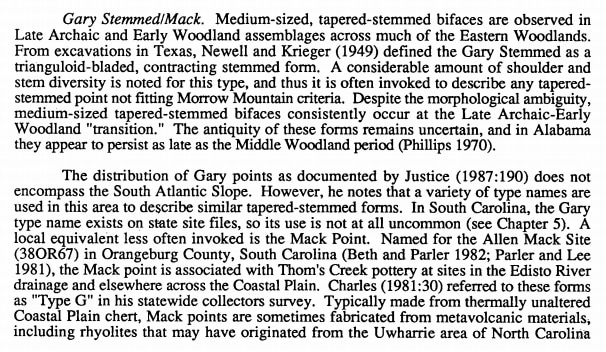

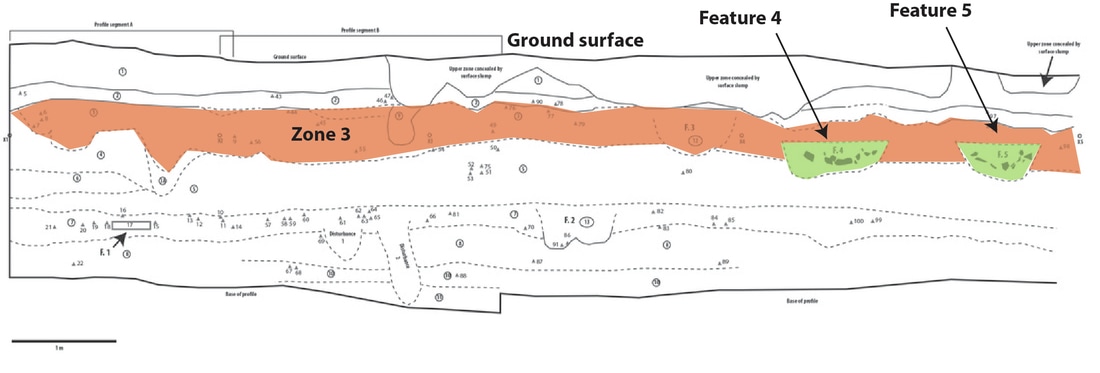
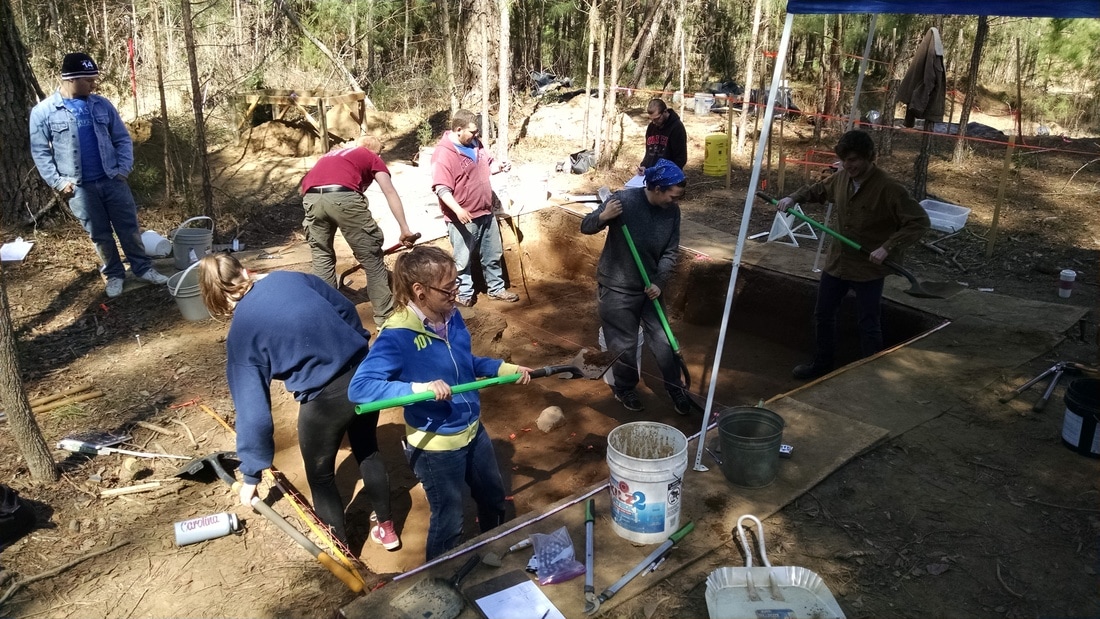
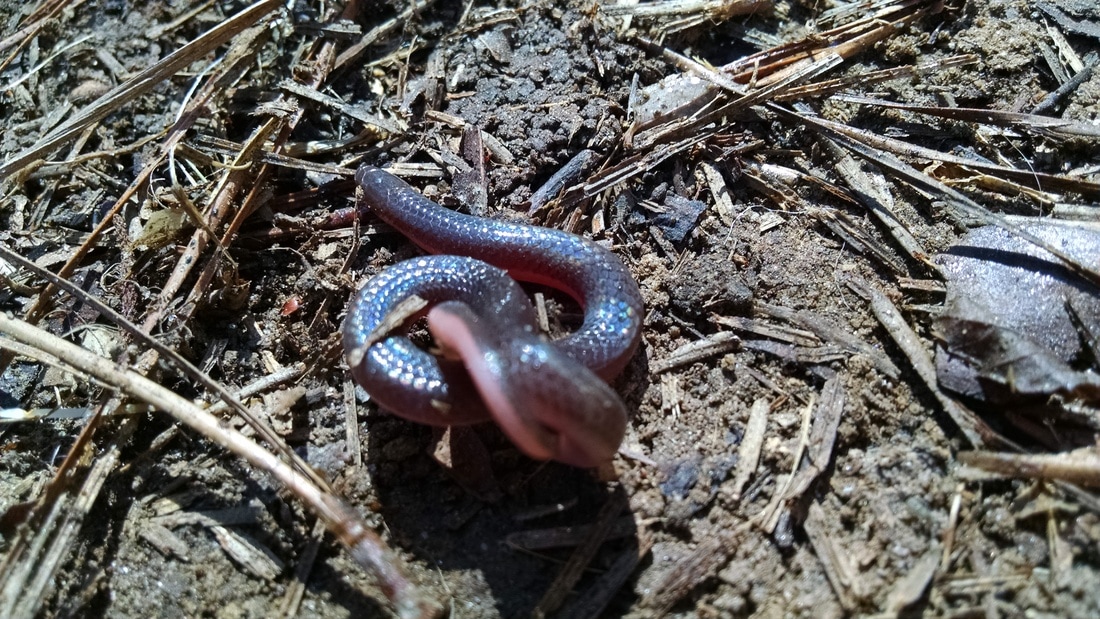


 RSS Feed
RSS Feed
